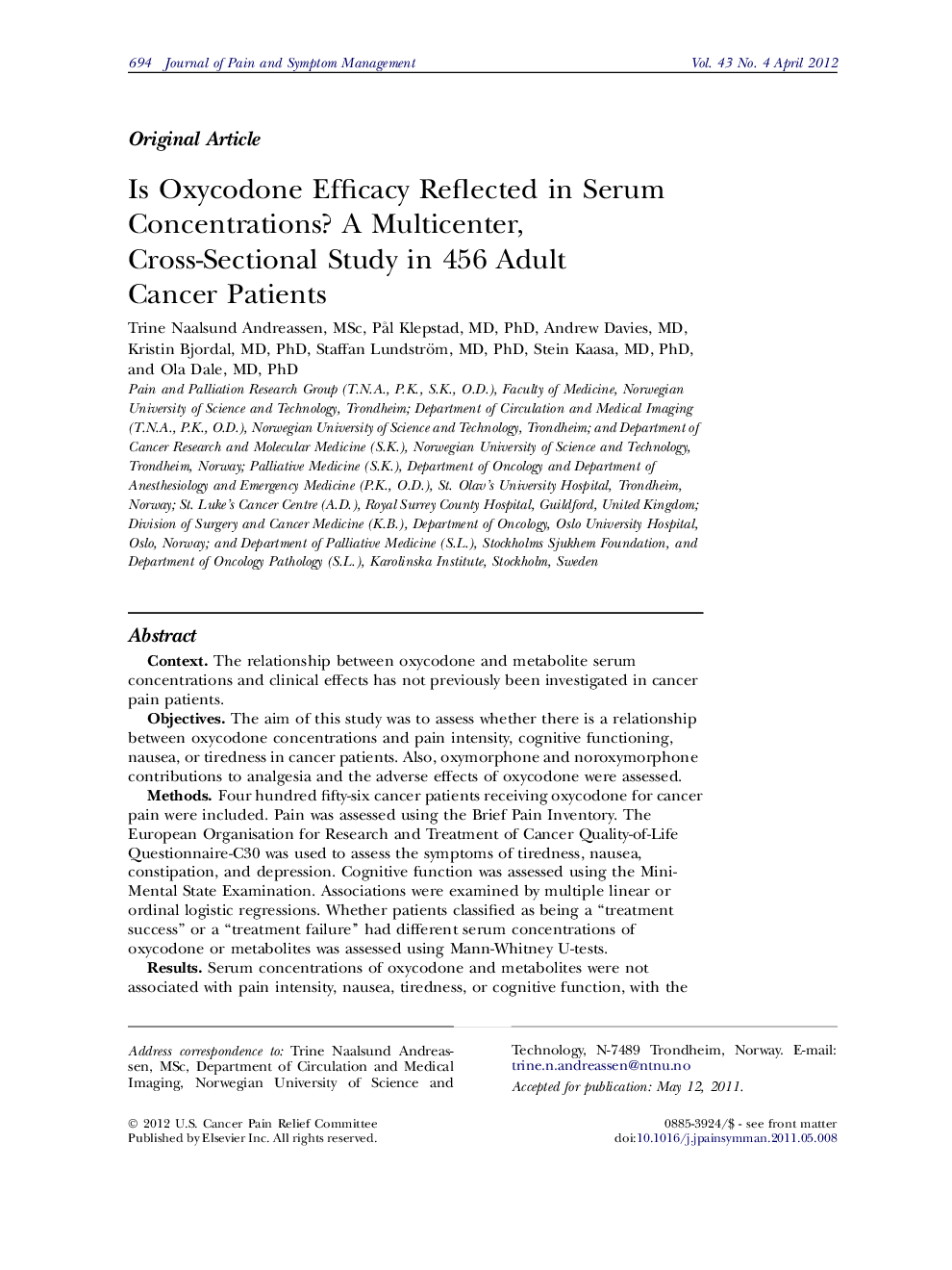| Article ID | Journal | Published Year | Pages | File Type |
|---|---|---|---|---|
| 2730135 | Journal of Pain and Symptom Management | 2012 | 12 Pages |
ContextThe relationship between oxycodone and metabolite serum concentrations and clinical effects has not previously been investigated in cancer pain patients.ObjectivesThe aim of this study was to assess whether there is a relationship between oxycodone concentrations and pain intensity, cognitive functioning, nausea, or tiredness in cancer patients. Also, oxymorphone and noroxymorphone contributions to analgesia and the adverse effects of oxycodone were assessed.MethodsFour hundred fifty-six cancer patients receiving oxycodone for cancer pain were included. Pain was assessed using the Brief Pain Inventory. The European Organisation for Research and Treatment of Cancer Quality-of-Life Questionnaire-C30 was used to assess the symptoms of tiredness, nausea, constipation, and depression. Cognitive function was assessed using the Mini-Mental State Examination. Associations were examined by multiple linear or ordinal logistic regressions. Whether patients classified as being a “treatment success” or a “treatment failure” had different serum concentrations of oxycodone or metabolites was assessed using Mann-Whitney U-tests.ResultsSerum concentrations of oxycodone and metabolites were not associated with pain intensity, nausea, tiredness, or cognitive function, with the exception that increased pain intensity was associated with higher oxymorphone concentrations. Patients with poor pain control and side effects had higher serum concentrations of the oxycodone metabolites, noroxycodone and noroxymorphone, compared with those with good pain relief and without side effects.ConclusionThis study of patients receiving oxycodone for cancer pain confirms previous observations that there is most likely no association between serum concentrations of opioid analgesics and clinical effects.
